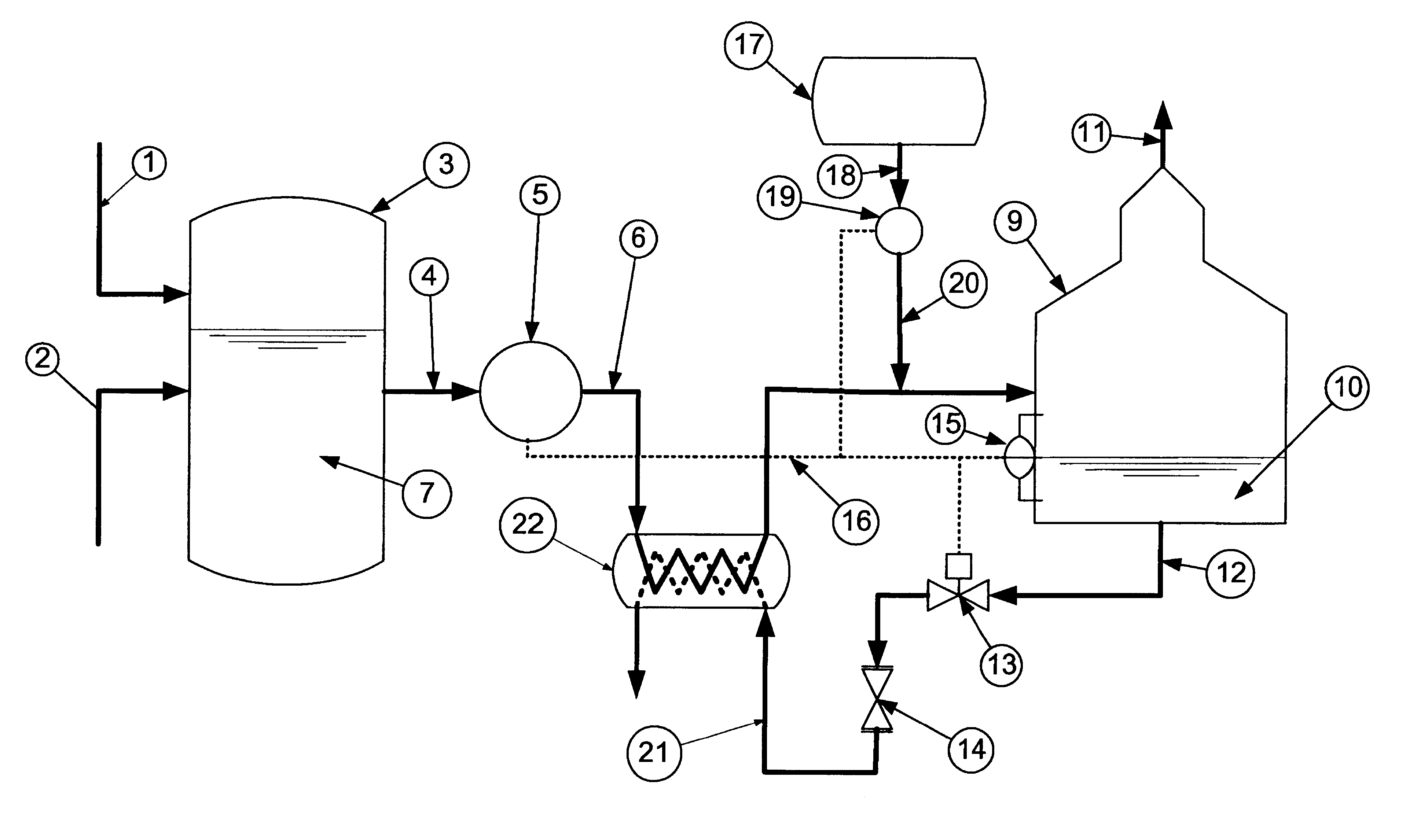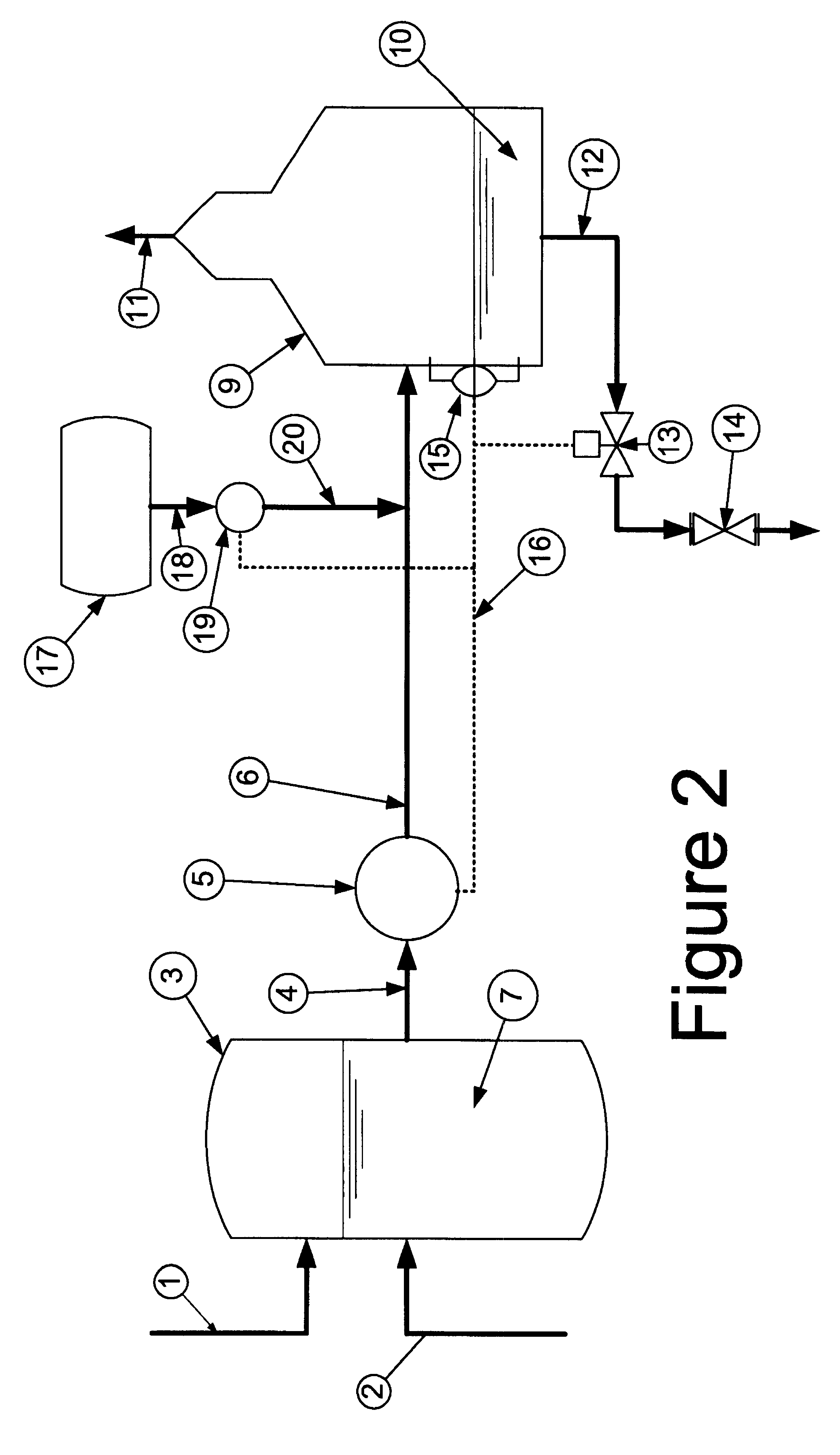Boiler water blowdown control system
a control system and boiler technology, applied in the direction of machines/engines, flushing, lighting and heating equipment, etc., can solve the problem that the present method is generally not applicabl
- Summary
- Abstract
- Description
- Claims
- Application Information
AI Technical Summary
Benefits of technology
Problems solved by technology
Method used
Image
Examples
Embodiment Construction
To configure a boiler system to achieve steam production of 11,885 pounds per hour (5391 kg / hr) in a 0-300 psig (0-2.07 MPa) boiler using feedwater having 7.5 ppm silica, a boiler operator may refer to ASME guidelines for 0-300 psig (0-2.07 MPa) boilers that provide for a maximum silica concentration in the boiler water of 150 ppm. Based on the feedwater analysis and the ASME guidelines, the boiler operator can calculate the allowable cycles of concentration using formula [1] as: ##EQU3##
Once the cycles of concentration have been determined, the boiler operator can determine the amount of blowdown required to maintain this level of concentration using formula [2],
BD=100 / R.sub.fw =100 / 20=5.00% blowdown required
as well as the evaporation rate and the quantity of feedwater required to maintain the boiler system using formulas [3] and [4]
E=100-5.00=95% evaporation
FW=11,885 / 0.95=12,510 lbs / hr (5674 kg / hr) feedwater
Thus, in order to operate the boiler system to produce 11,885 lbs / hr (5391...
PUM
 Login to View More
Login to View More Abstract
Description
Claims
Application Information
 Login to View More
Login to View More - R&D
- Intellectual Property
- Life Sciences
- Materials
- Tech Scout
- Unparalleled Data Quality
- Higher Quality Content
- 60% Fewer Hallucinations
Browse by: Latest US Patents, China's latest patents, Technical Efficacy Thesaurus, Application Domain, Technology Topic, Popular Technical Reports.
© 2025 PatSnap. All rights reserved.Legal|Privacy policy|Modern Slavery Act Transparency Statement|Sitemap|About US| Contact US: help@patsnap.com



